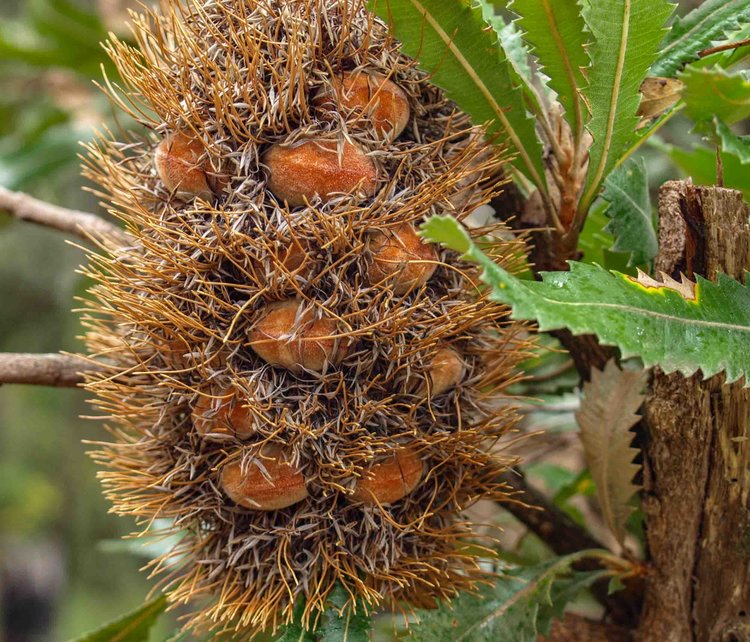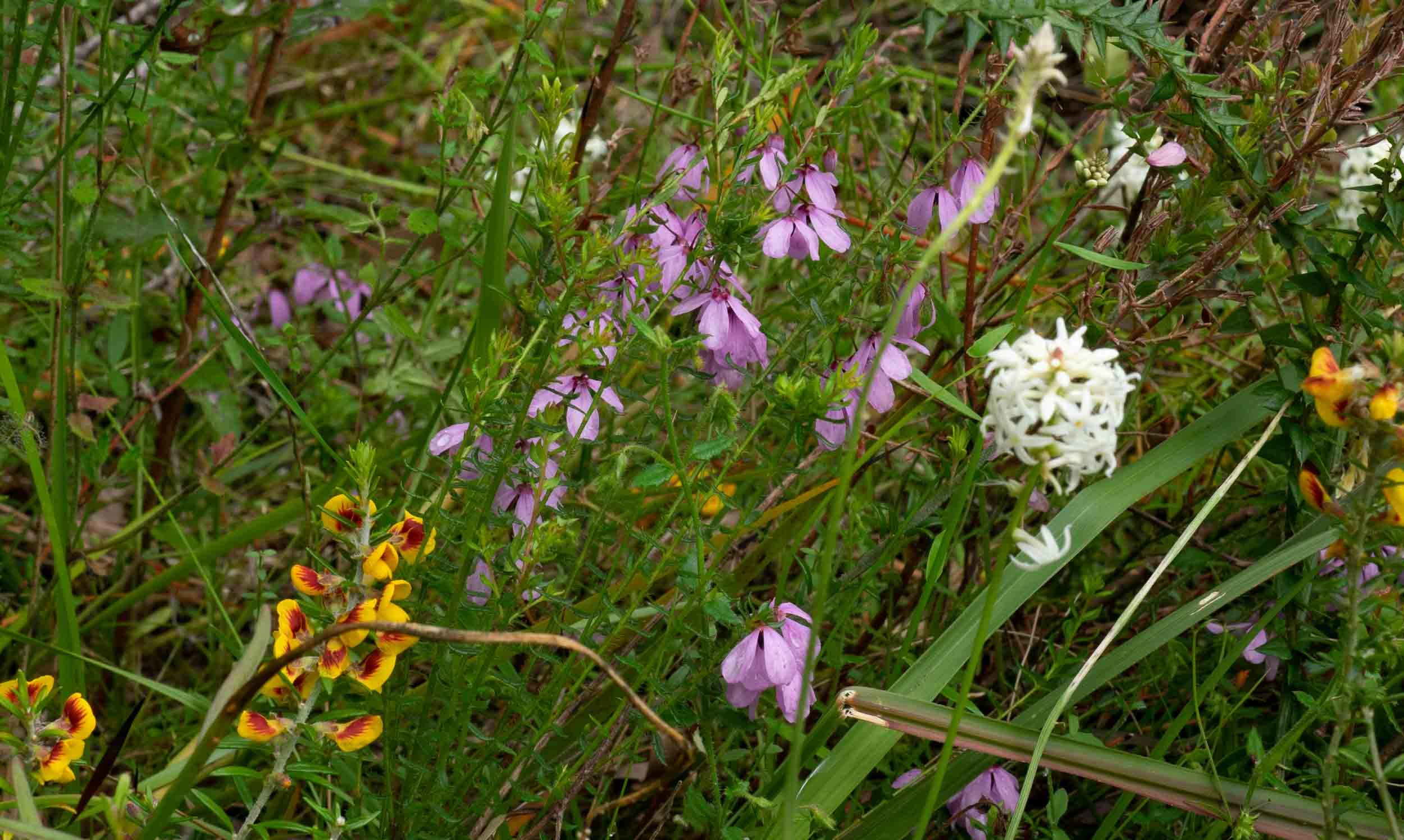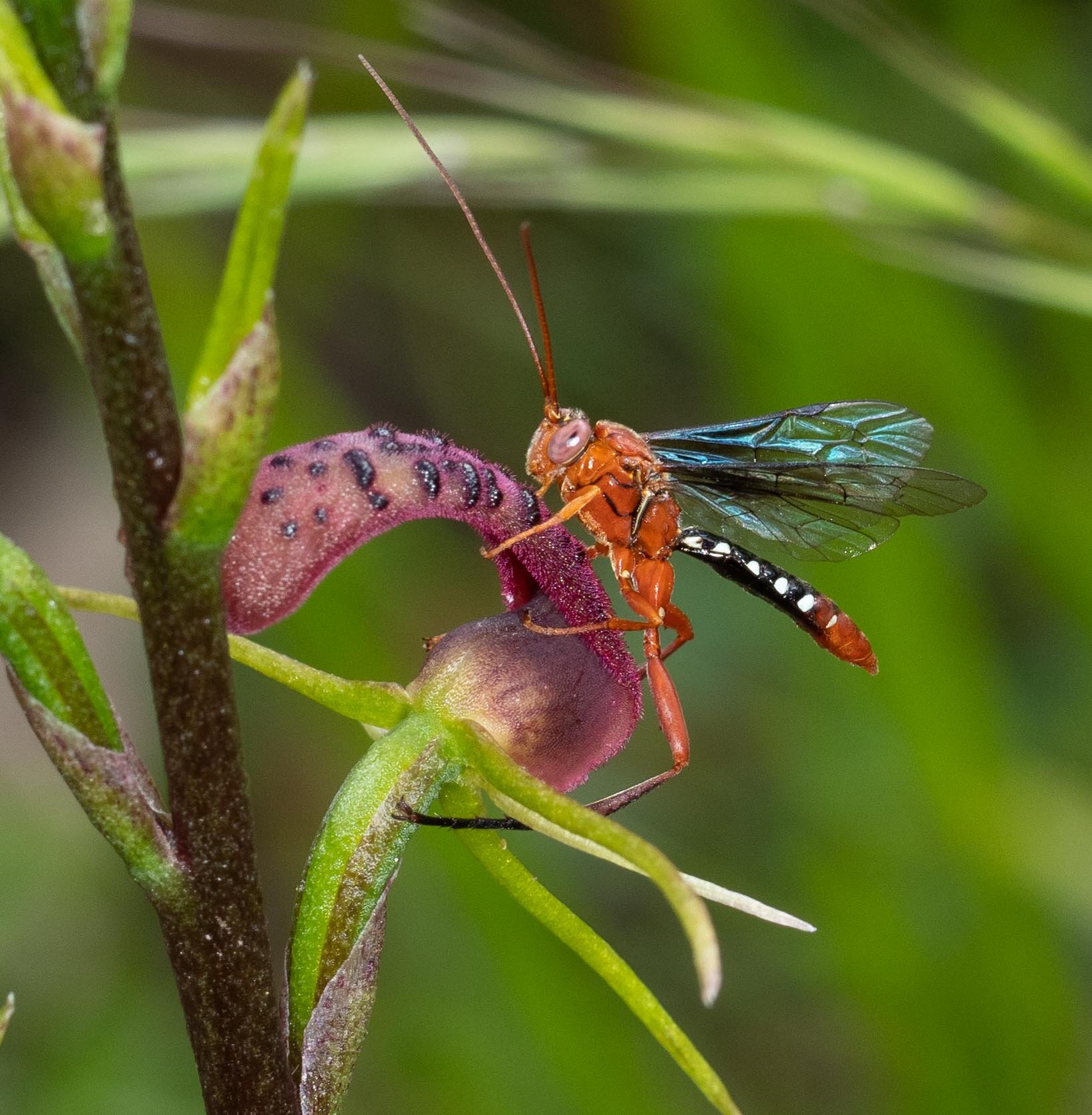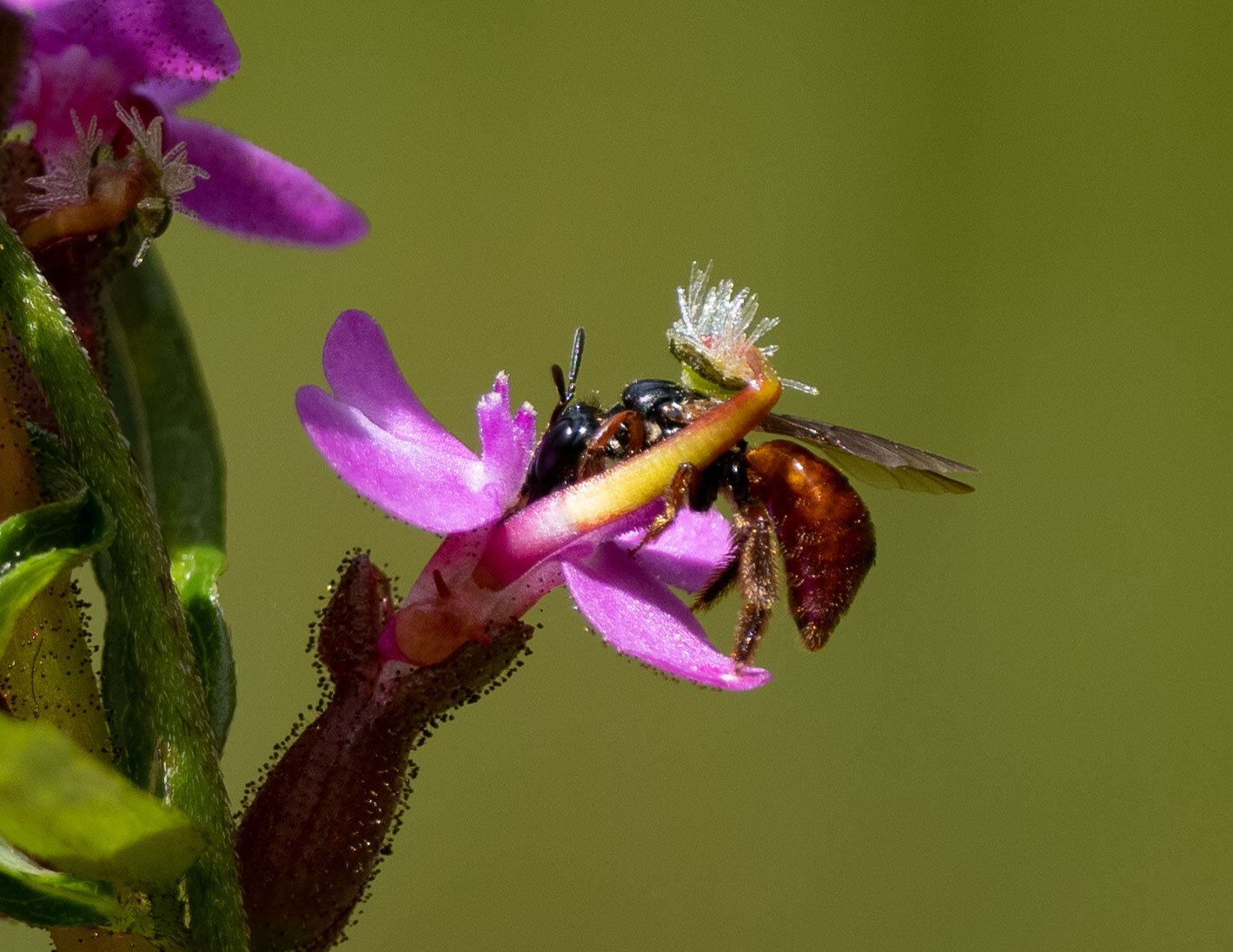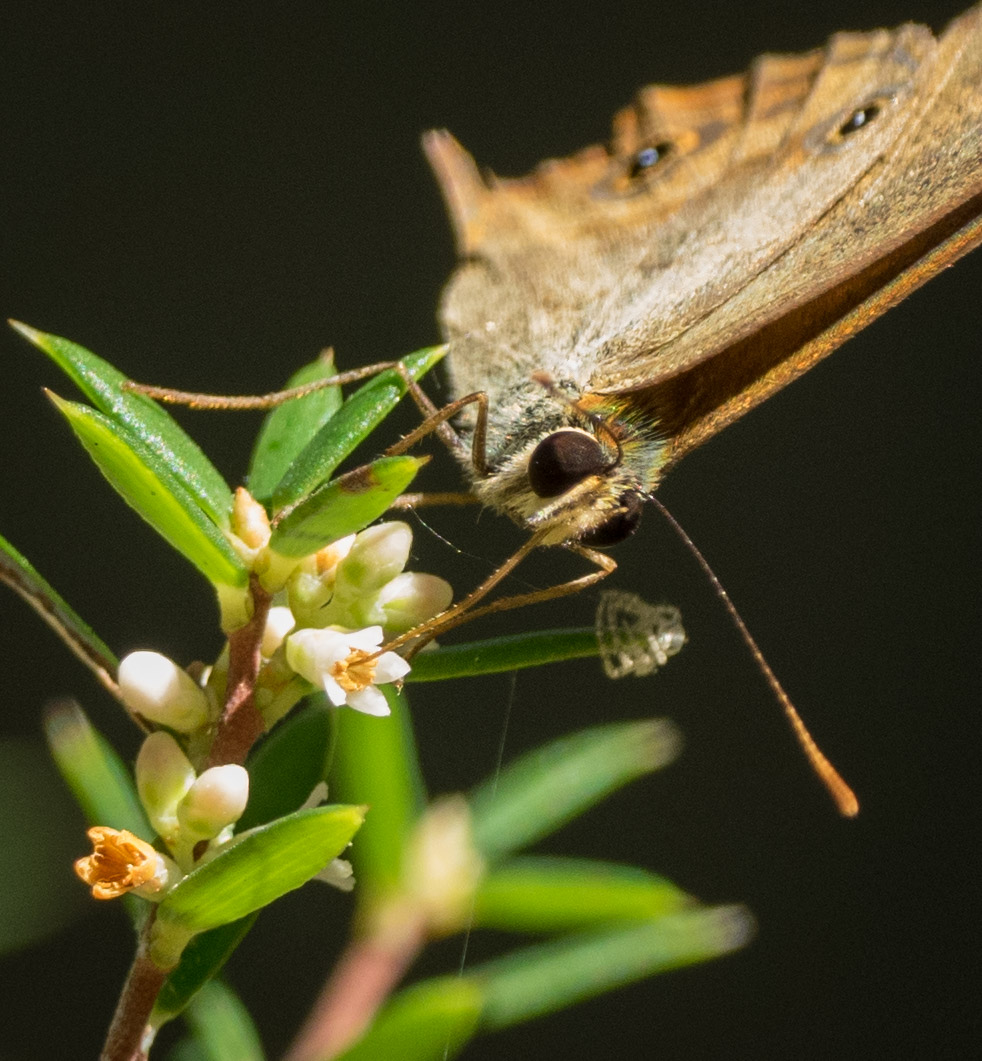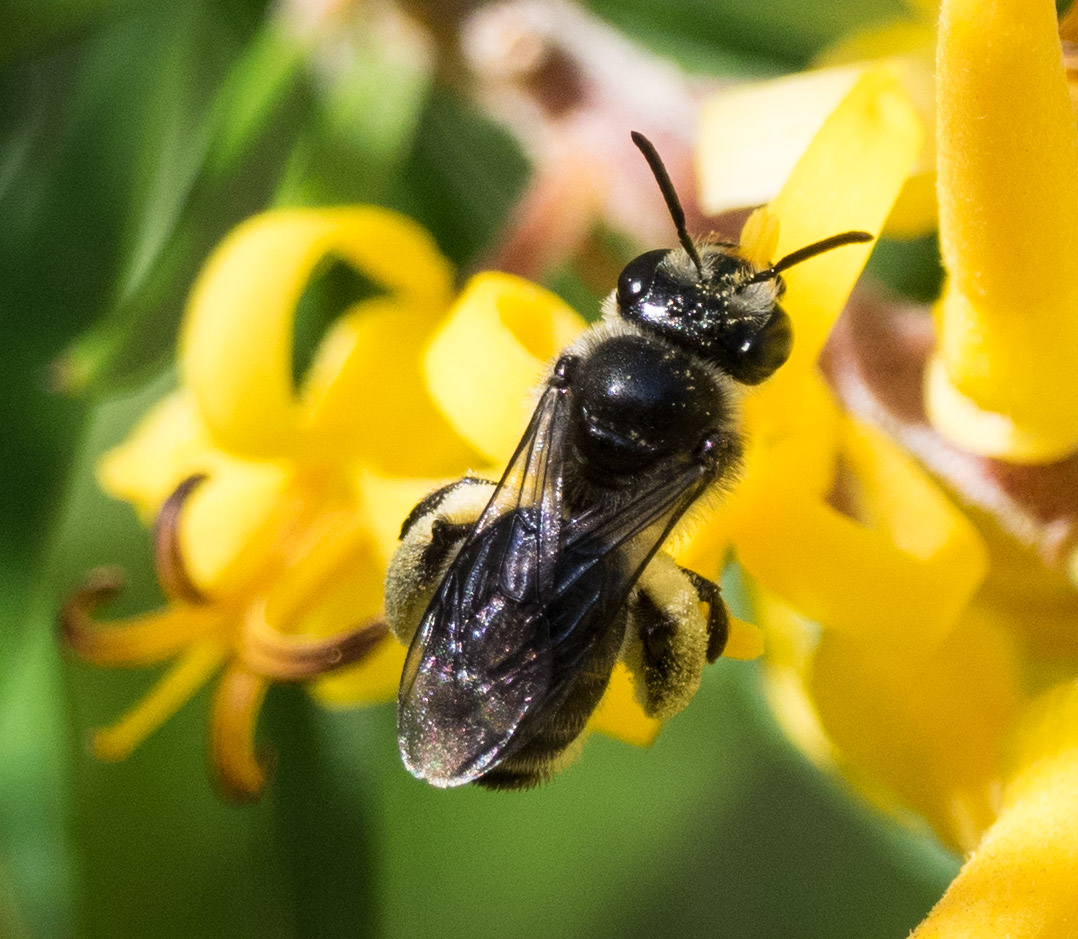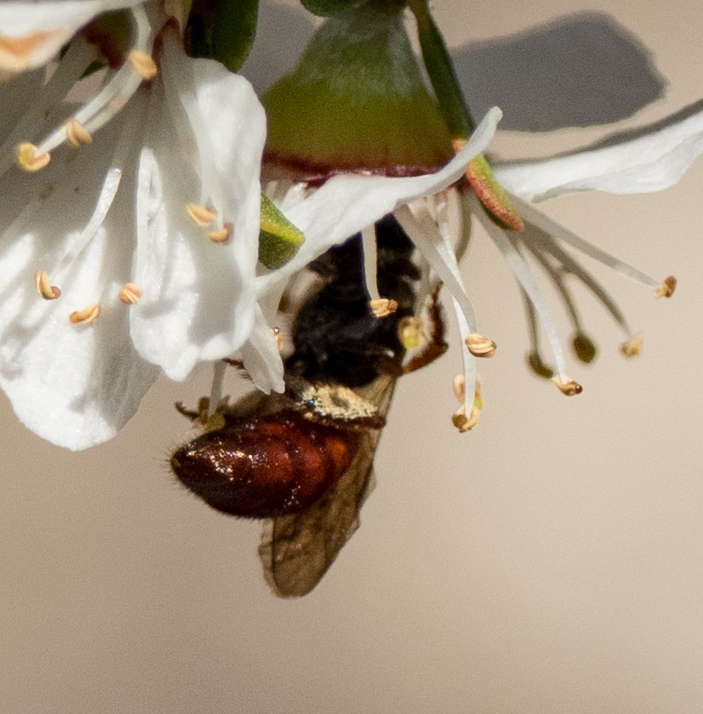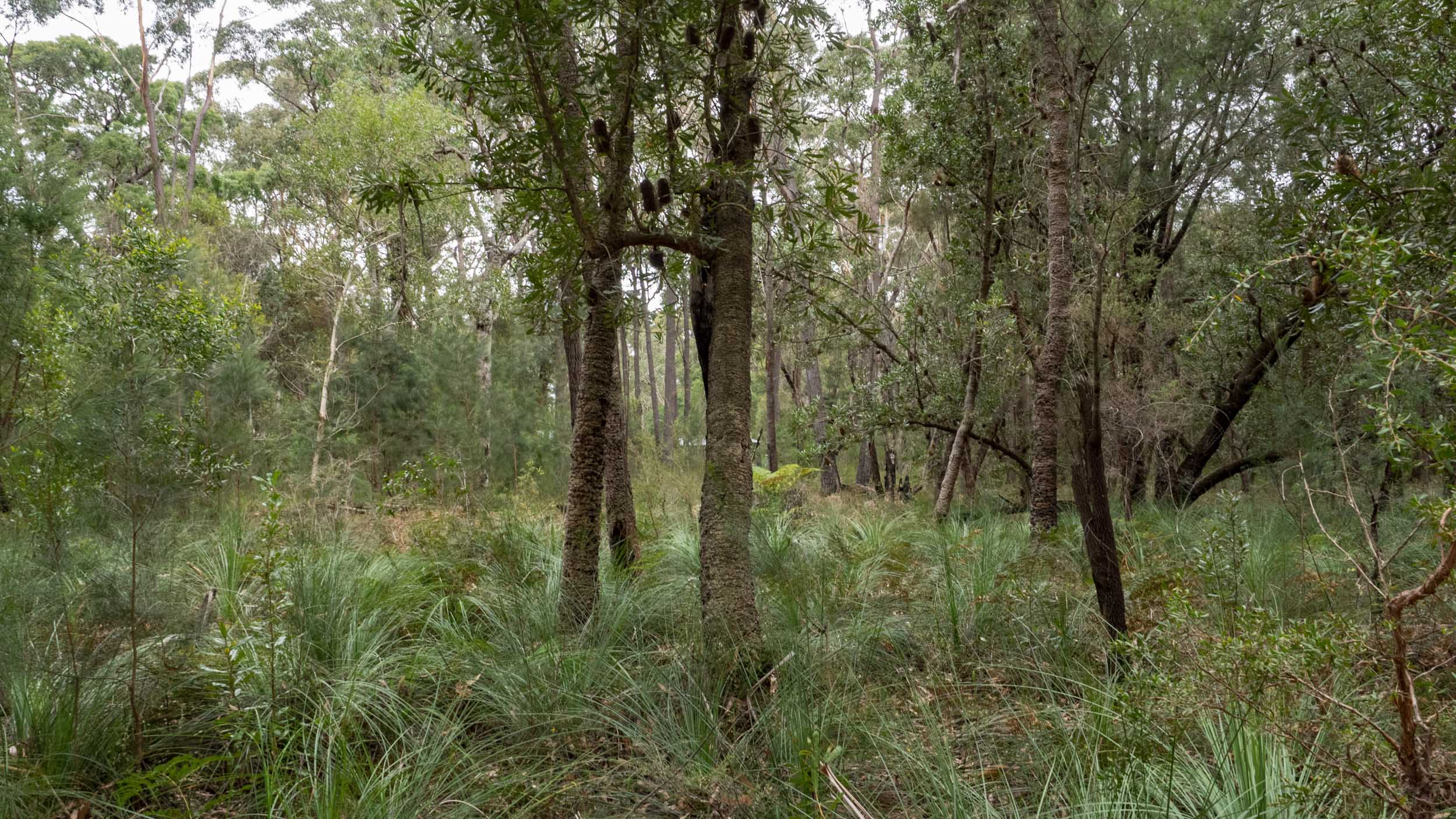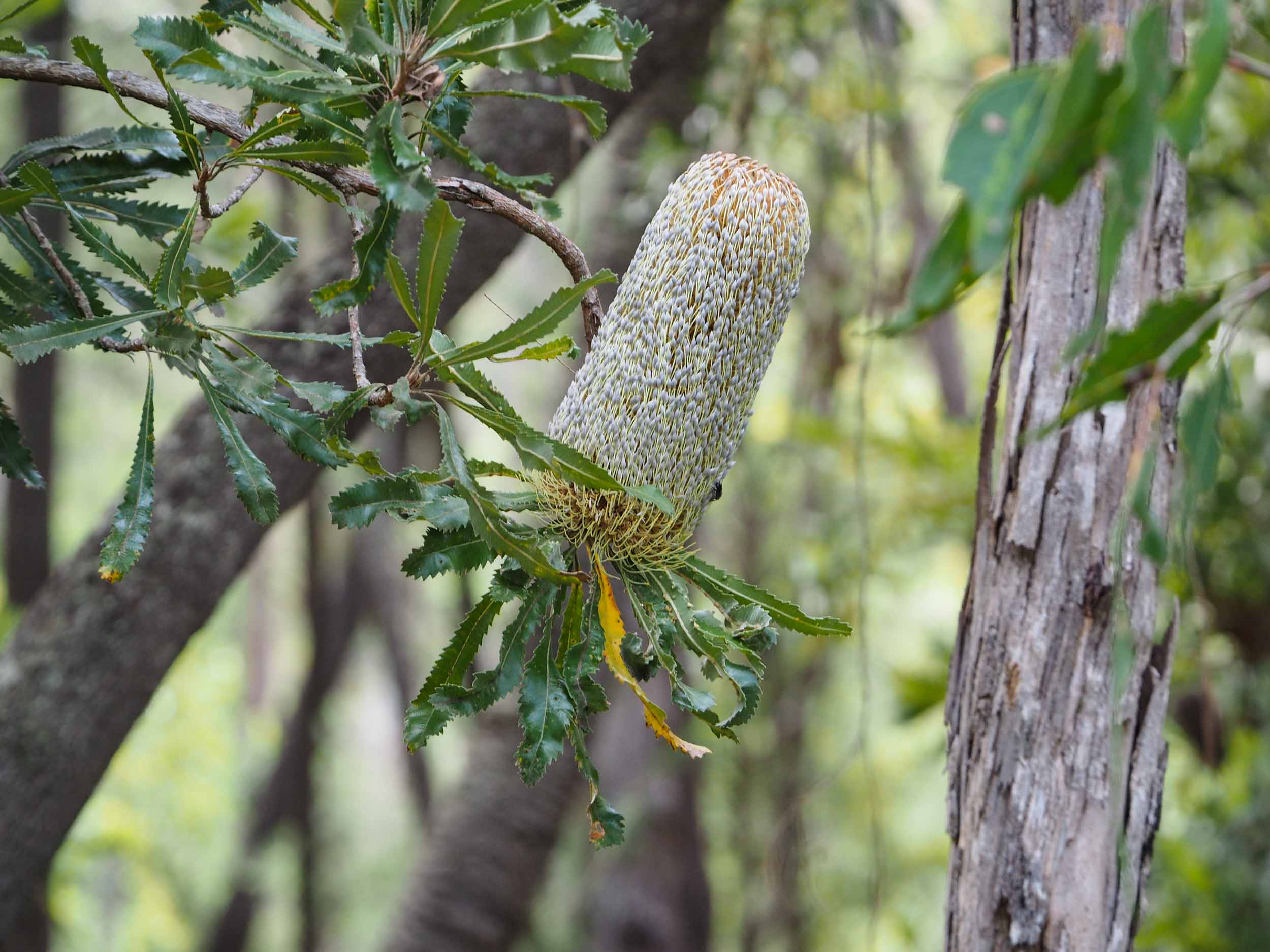Summer flowering of Proteaceae

Proteaceae is an ancient family of flowering plants, which includes familiar Australian genera such as Banksia, Grevillea, Telopea (Waratah) and Hakea as well as lesser-known groups like Persoonia (Geebung), Isopogon (Drumsticks, Conebush) and Lomatia (Native Holly). It is a highly diverse family, although there are some diagnostic features shared by most members - such as the large, showy flowering heads.
Two genera, Banksia and Persoonia, are widespread on the block, these plants favouring the sandy, nutrient-poor soils found here. Both Persoonia species, P. linearis (Narrow-leaf Geebung) and P. levis (Smooth Geebung) as well as one of our two Banksia species, Banksia serrata (Saw or Old-man Banksia) reach their peak of flowering in January.
Persoonia linearis is an attractive bush, with masses of yellow flowers. The Persoonia flower bears little similarity to that of Banksia serrata or for that matter to most other Proteaceae - as I've said, this family is very diverse.
A Persoonia levis flower
A Banksia serrata "flower". Or is it a cone? or what?
But hang on a minute... What is a Banksia flower? When I tried to answer this question for myself, I realised that I had a poor understanding of the structure of the Banksia inflorescence.
To sort this out and to work out how these very different flowers of two members of the same plant family are related, I went back and had a close look at the Persoonia flower.
First, a bit of revision of basic floral structure. Fun botany ahead!
The "Standard" Flower
I've chosen the tea tree flower (in this case Leptospermum myrsinoides) to illustrate the parts of a flower. The tea tree is a flower with which many people will be familiar and is relatively unmodified - think of it as a "common garden" flower. Tea trees belong to the Myrtaceae family, not Proteaceae.
The labelled diagrams below show the parts of a tea tree flower.
The green cup in the middle of the flower is filled with nectar, to attract insect pollinators.
There is a whorl of five petals and a separate whorl of five triangular sepals, which sit between and beneath the petals.
The little brown dots at the top of the stamens are the anthers - these contain the pollen, the male sex cells.
The single green rod in the middle of the flower is the female reproductive structure. Pollen cells land on the sticky stigma and form a long tube which grows down the style. This tube fuses with an ovule, the female sex cell, in the ovary, which is hidden at the base of the flower.
Bingo! - fertilisation and the start of a new plant. (Actually this is the short version of a longer, but no less interesting story).
The Persoonia Flower
So how does the Persoonia flower compare with this?
The Persoonia flower starts out looking quite different to a tea tree flower - it is a tube closed at the end.
But then the tube splits open from the closed end and it begins to look more like a standard flower.
One difference to the tea tree flower is that the two whorls of petals and sepals are replaced by a single whorl of tepals. There are only four of these tepals and they are still fused at the base, while their ends have unrolled.
There are four stamens and the base of each one is fused with the adjacent tepal. Their ends have also unrolled.
There is a single style with a stigma at the top. I've cut away one tepal in a flower to show the arrangement of the parts more clearly and to expose the swollen ovary at the base of the style.
Nectar lies at the base of the flower, between the ovary and the tepals. See Kerri's recent blog for an account of how native bees get to the nectar by prising apart the stamens - and in the process pick up pollen from the stamens or transfer pollen already on their body to the stigma.
So you can see that the Persoonia flower is not radically different to a standard flower, such as the tea tree.
The Banksia Flower and Inflorescence
Banksia on the other hand is very different! Its flowering spike is composed of many, many individual flowers. This can be clearly seen in the image of a young inflorescence below.
Each of the grey structures is a pair of flower heads. I reckon there must be over a thousand on this one flower spike, lined up neatly in rows and columns.
This close-up of the spike shows the protruding flower heads.
The image below shows a spike at a later stage of development. Beneath the upper, undeveloped, brown zone you can see several rows of grey, fluffy structures. These are the heads of flowers that have continued to grow outwards from the central woody stalk.
Below that is a zone in which each grey cap lies at the end of a long yellow stalk. What are those stalks?
Let's look at a spike at a slightly later stage from above to work that out. You can see the individual flowers in the image below. Each consists of a bundle of tepals (four in a bundle) with a grey cap.
The yellow stalk that projects from the base of the grey cap is a style.
To show the structure of an individual flower more clearly, I've dissected one away and imaged it below.
This is a highly modified flower! At an earlier developmental stage to the photo above, four tepals form a tube, a single style runs along the centre of that tube and four stamens are fused to the inner side of the tepals - not so different to the Persoonia flower.
However, as the flower develops, the style lengthens and eventually it splits the tepals apart, breaking open the tube and bowing out to the side, as shown in the image. The head of the style is at this stage still trapped within the grey cap formed by the fused ends of the tepals.
I've dissected a flower at this stage of development to show the arrangement of those parts.
Here you can see the stigma, which is covered in pollen it has picked up from the adjacent stamens, sitting in the cap formed by the tepals.
In the image below, I've pulled away the style and stigma to show the pair of stamens in this half of the flower more clearly. Pollen grains everywhere!
The Pollen Presenter
As the style continues to lengthen, it eventually pulls right away from the flower cap. You can see this in the flowers in the lower part of the spike below.
The stigma on each of these styles is covered in pollen. The style is called a pollen presenter. Any animal that tries to access the nectar in the base of each Banksia flower will invariably brush against the stigma and be daubed with pollen. When it feeds on another inflorescence it will transfer that pollen to a receptive stigma.
In the case of Banksia serrata, that pollinating animal is likely to be either a small mammal, such as an Antechinus or a nectar-feeding bird, such as the New Holland Honeyeater shown below or a Rainbow Lorikeet. These vertebrates have been shown to be more effective pollinators of this Banksia than insects.
Our Other Banksia Species
The other Banksia species that occurs on the block, Banksia spinulosa, has a similar floral structure and is also pollinated by birds, such as the Eastern Spinebill shown below. B. spinulosa flowers later than B. serrata, beginning in late January.
The styles of the dark red pollen presenters in Banksia spinulosa extend like hairpins from the surface of the inflorescence, giving the species its common name of Hairpin Banksia. Photo taken in late April.
Style of a Banksia spinulosa flower looping out from and separating the bundle of tepals which initially enclosed it.
Development of the Banksia Fruit
So what happens after the Banksia flowers in an inflorescence are pollinated? Only a few of the hundreds or thousands of flowers in an individual Banksia serrata flower spike will go on to develop into a fruit. That fruit is a woody follicle, several of which can be seen in the image of a spike below.
Each follicle consists of a pair of woody valves which, when opened, release a pair of winged seeds. In the case of Banksia serrata, these valves only open after being exposed to the smoke and heat of a bushfire.
The structures shown in the image above are commonly, but incorrectly called "cones". Strictly speaking, cones only occur in conifers and cycads.
In any event, Banksia "cones" were the inspiration for May Gibb's "Big Bad Banksia Men". The follicles are the eyes, nose and mouth of the men. The hair on their bodies is actually the old, withered pollen presenters. (Sorry to demystify that for you, Tom!)
An old Banksia spinulosa cone - a Banksia Man!
Pollen Presenters in another Proteaceae plant
We have a third Proteaceae genus on the block - Hakea, represented by Hakea macreana, the Willow Needlewood. This species flowers in late Winter - Spring. However, I've included an image from our Gallery, which I took last September of the flowers of this species.
The Hakea flower is clearly very different to the Banksia inflorescence - it consists of individual, separate flowers. But it does show that characteristic structure seen in the Banksia flower and indeed most other members of the Proteaceae family - a pollen presenter. These can be clearly seen in the pair of flowers in the bottom right hand corner of the image, looping out from the four white tepals which have split apart, just like they do in Banksia.
Evolution - some things change, some remain the same. I love it!




















